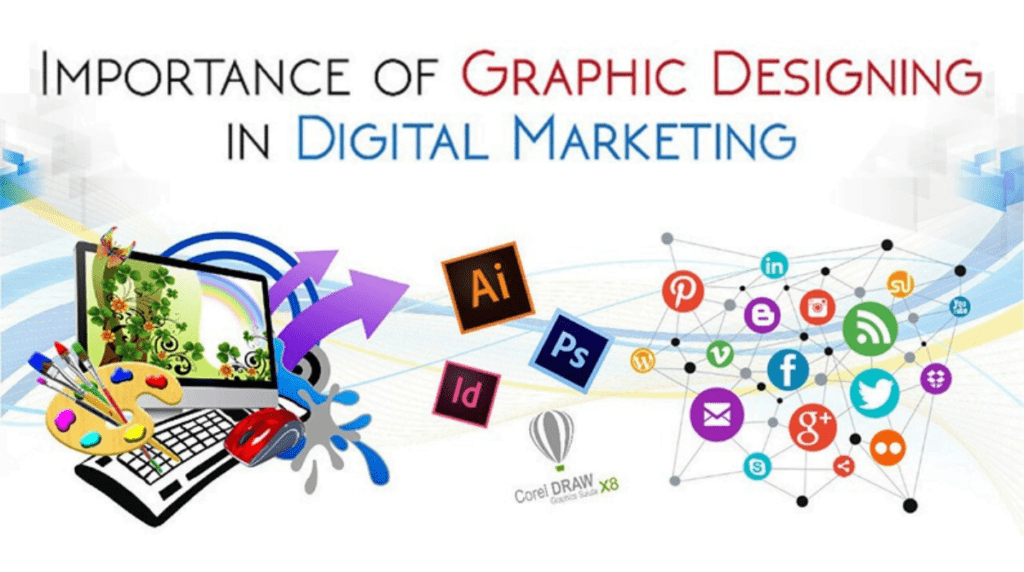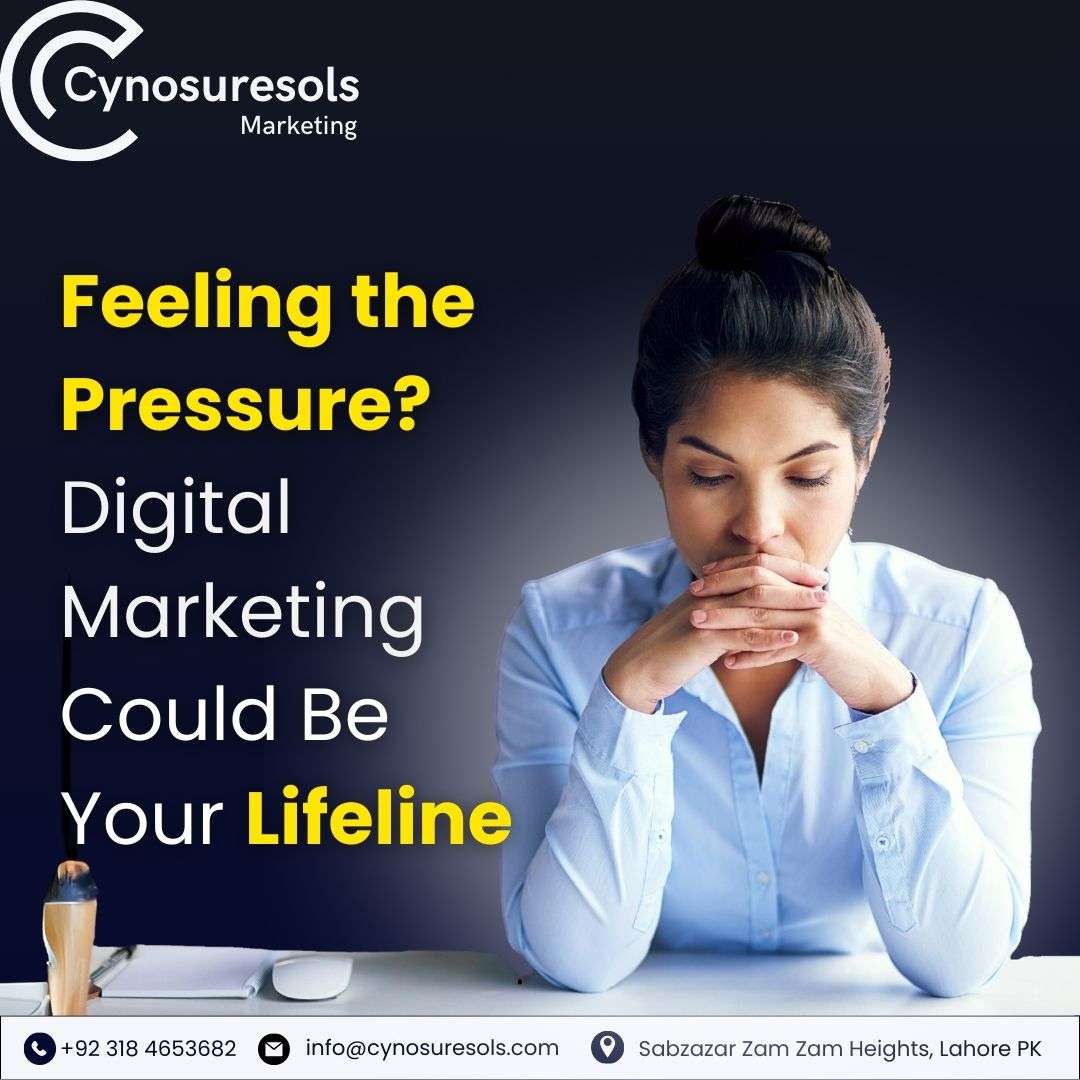Introduction:
In today’s competitive business landscape, graphic design is more crucial than ever. Not only does it make your brand visually appealing, but it also communicates your message effectively and builds trust with your audience. Let’s dive into the various ways graphic design can propel your business to new heights.

Understanding Graphic Design:
What is Graphic Design?
Graphic design is the art of combining text and visuals to communicate a message. It’s about solving problems through visual solutions and creating an aesthetic appeal that attracts and engages viewers.
Elements of Graphic Design
Graphic design comprises several elements, including color, typography, imagery, layout, and space. Mastering these elements allows designers to create compelling and effective visuals.
The Role of Graphic Design in Branding:
Building Brand Identity.
Your brand identity is the visual representation of your company’s values and personality. Graphic design helps craft a unique identity that distinguishes you from competitors.
Enhancing Brand Recognition.
Consistent use of design elements like logos, colors, and fonts helps build brand recognition. Customers are more likely to remember and trust a brand with a cohesive and professional look.
Creating a Strong Logo.
A logo is often the first impression of your brand. A well-designed logo is simple, memorable, and versatile, providing a strong foundation for your brand identity.
Graphic Design in Marketing:

Visual Appeal in Marketing Campaigns.
Visuals are a powerful tool in marketing. They grab attention, convey messages quickly, and can evoke emotions, making your campaigns more effective.
Role of Infographics.
Infographics are excellent for presenting complex information in an easily digestible format. They combine data and design to tell a story, making them highly shareable.
Designing Effective Advertisements.
Advertisements need to stand out and be memorable. Good design ensures your ads catch the eye and communicate your message clearly, leading to higher engagement and conversions.
Improving Online Presence with Graphic Design:
Website Design and User Experience.
Your website is your digital storefront. A well-designed website enhances user experience, making it easy for visitors to find what they need and encouraging them to stay longer.
Importance of Mobile-Friendly Design.
With the rise of mobile browsing, having a mobile-friendly design is essential. Responsive design ensures your site looks and functions well on all devices, improving user satisfaction and SEO rankings.
Creating Engaging Social Media Content.
Social media is a visual platform. High-quality graphics and consistent branding make your content more engaging and shareable, helping you reach a wider audience.
Graphic Design and Customer Engagement
Designing for User Engagement.
Interactive and visually appealing designs keep users engaged. Whether it’s a website, app, or social media post, good design can significantly enhance user interaction.
Interactive Design Elements.
Elements like buttons, forms, and animations make your designs interactive. They guide users through your content and encourage them to take action.
Consistent Visual Language.
Consistency in design elements across all platforms ensures a unified brand experience. This consistency builds trust and makes your brand easily recognizable.
Print Media and Graphic Design:

Importance of Business Cards and Brochures.
Print media is still relevant. Business cards and brochures designed professionally can leave a lasting impression and provide tangible reminders of your brand.
Effective Flyer and Poster Design.
Flyers and posters are great for local advertising. Eye-catching designs and clear messaging make them effective tools for attracting attention and driving action.
Designing Product Packaging.
Product packaging is often a consumer’s first interaction with your product. Attractive and informative packaging design can influence purchase decisions and enhance brand loyalty.
Graphic Design in E-commerce:
Enhancing Product Listings.
High-quality images and detailed graphics make your product listings more appealing. They help customers make informed decisions and increase the likelihood of purchases.
Creating Trust Through Visuals.
In e-commerce, trust is paramount. Professional design elements like secure icons and customer testimonials can enhance trust and credibility, leading to higher conversion rates.
Visual Storytelling in E-commerce.
Visual storytelling involves using images and design elements to tell a story about your product or brand. It creates an emotional connection with customers, making them more likely to buy.
Hiring Professional Graphic Designers:
Benefits of Professional Design Services.
Professional designers bring expertise and creativity that can elevate your brand. They understand the nuances of design principles and can deliver high-quality, effective visuals.
How to Choose the Right Designer.
When choosing a designer, consider their portfolio, style, and experience. Ensure they understand your brand and can deliver designs that align with your vision.
Working with Freelancers vs. Design Agencies.
Both freelancers and design agencies have their pros and cons. Freelancers are often more flexible and cost-effective, while agencies can offer a broader range of services and resources.
DIY Graphic Design Tools:
Popular Tools and Software.
There are many tools available for DIY graphic design, such as Canva, Adobe Spark, and Figma. These tools are user-friendly and offer a range of templates and design elements.
Tips for Non-Designers.
Even if you’re not a professional designer, you can create effective designs by keeping it simple, using templates, and following design best practices.
Balancing Cost and Quality.
DIY tools can save money, but it’s important to ensure your designs still look professional. Invest in high-quality templates and consider hiring a designer for more complex projects.
Staying Updated with Design Trends:
Importance of Keeping Up with Trends.
Design trends change rapidly. Staying updated ensures your brand remains relevant and appealing to your audience.
Current Graphic Design Trends.
Trends such as minimalism, bold typography, and organic shapes are popular right now. Incorporating these elements can give your designs a modern look.
Implementing Trends in Your Business.
While it’s important to stay current, ensure that any trends you incorporate align with your brand identity. Use trends to enhance your designs, not overwhelm them.
Measuring the Impact of Graphic Design:
Metrics to Track.
Track metrics such as website traffic, conversion rates, and social media engagement to measure the impact of your graphic design efforts.
Analyzing Design ROI.
Evaluate the return on investment (ROI) of your design projects by comparing the costs of design services with the revenue generated from improved marketing and sales.
Continuous Improvement.
Regularly review and update your designs based on feedback and performance metrics. Continuous improvement ensures your designs remain effective and aligned with your business goals.
Case Studies:
Successful Brands and Their Designs.
Study successful brands to understand how they use graphic design to their advantage. Analyze their design elements and strategies for inspiration.
Lessons from Leading Companies.
Leading companies like Apple and Nike use design strategically. Learn from their approaches to create compelling designs for your business.
Real-World Examples.
Look at real-world examples of businesses that have transformed their brand through graphic design. These case studies can provide valuable insights and motivation.
Conclusions:
Graphic design is a powerful tool for boosting your business from building a strong brand identity to enhancing customer engagement and boosting leads.




4 thoughts on “How to Boost Your Business with Graphic Design?”
I like this site it’s a master piece! Glad I found this ohttps://69v.topn google.Raise range
Hey there! Someone inn my Myspace grooup shared this site with
us so I came tto look it over. I’m definitely loving the information. I’m
book-marking and will be tweeting this to myy followers!
Fantasric blog and brilliant design. https://NJT.Ru/forum/user/188163/
Hey thyere outstanding website! Does running a blog like this require a large amount of work?
I have absolutely no knowledge of programming however I had
been hoping to start my own blog in the near future. Anyways, if yyou hae any recommendations or tips for new blog ownrs please share.
I know this is offf topic but I just wanted tto
ask. Many thanks! https://Forums.Overclockers.ru/memberlist.php?mode=viewprofile&u=435149
I for all time emailed this web site post page to all my associates, as if like tto read it afyerward my contacts wjll too. http://Chaiknet.ru/person/61718/